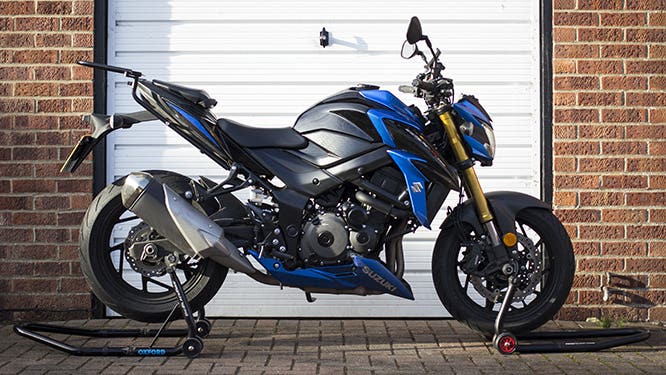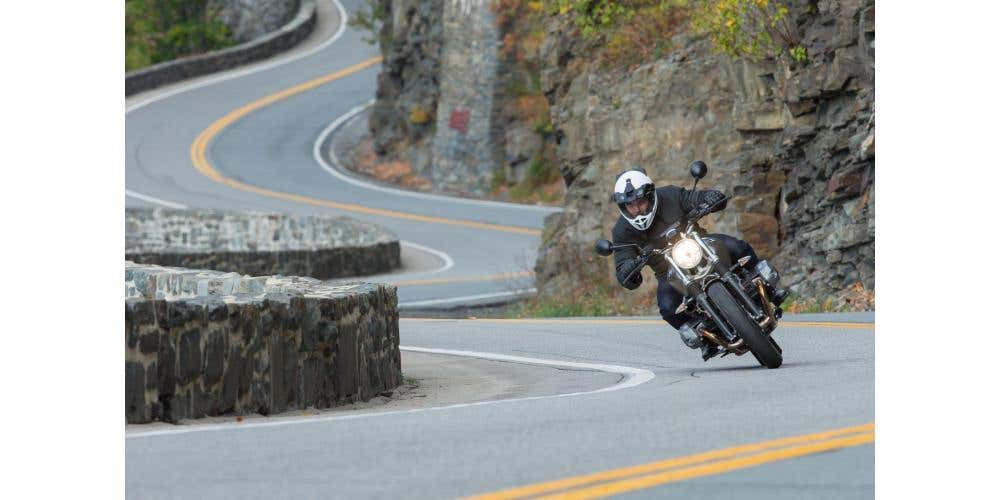The weather is definitely taking a turn for the warmer, with several days of sunshine already behind us. Sure, we’re at a unique point in time but there’s nothing stopping you spending some time with your bike to make sure you’re able to get out and about on it in the summer (let’s hope!) with everything functioning as it should. Some of us will simply be taking an enforced break from riding, but others won’t have touched their bike since before winter.
Obviously, there are a few things to bear in mind when taking your bike and gear out of hibernation, or simply giving them a refresh for the summer months when you might be using the bike more or taking longer trips.
Let’s start with your bike – like most machines they don’t take well to sitting idle unless they’ve been treated properly to stay still for a while. Fluids are a major issue if they’re left stationary; brake fluid and fuel will start to change slowly from the moment they’re put in your bike. Ensure your brake fluid isn’t past its sell-by date (change every 2 years is a good guide) and that things are functioning smoothly at the front and rear. Your riding could be rusty so you want your brakes to respond properly! Fuel is the other big one if you’ve left your bike for several months – preventative steps are key here. Putting fuel stabiliser will prevent the worst of the fuel going ‘off’, and brimming the tank to avoid condensation will also help. If you’ve not managed this then you might need to consider draining the tank to ensure your engine fires up nicely when the time comes. Lubrication of things like cables (assuming you’ve not got a fly-by-wire throttle) is also crucial to your bike behaving nicely, and switches might need unsticking, so check your lights too.


Your next biggest enemy is corrosion. In an ideal world everytime you’re done riding your bike it gets put somewhere dry, with no road crud stuck to it. This simply is practicable for a lot of people so a coating of ACF-50 might be your best bet when it comes to corrosion protection. If you’ve angered the rust gods then you might need to bust out the Autosol to get shiny surfaces back to their former glory. Taking the time to give your bike a deep clean is a great way to get familiar with it; from learning how to remove and fit any fairing, to checking all parts of the bike for wear and tear that might not otherwise be obvious. If you're really going to town with the cleaning SDoc 100 comes highly recommended - simply spray on, leave for a while, then rinse off with remarkable results, just be sure to re-lubricate key areas such as the drive-chain and side-stand.
Electrical power is your next biggest enemy, and if you’ve left your bike for a long time unused you’re likely going to run into trouble. Some advanced battery chargers have impressive recovery modes for flat batteries however, and they’ll be useful for you going forwards to ensure you’re not left with a dead battery at any point in the year. Sometimes you will have a truly dead battery, but generally speaking they’re easy to replace.
Tyres, being rubber, have a limited shelf life. In an ideal world when your bike is stationary for a long time it’ll be perched on paddock stands to stop flat spots forming. Second best is a centre stand taking the rear wheel off the ground and most weight off the front, and worst is the side stand. Be wary of side stands failing too, that has been known to happen! If you can’t get the bike upright with paddock stands or a centre stand it’d be wise to periodically move the bike so flat spots have a harder time forming. It goes without saying a flat spot can be very dangerous on the move! The other thing to check for is the overall condition of the tyre – we're looking for sufficent tread depth across the tyre (1mm across ¾, visible for the remaining ¼ is the legal minimum, but don’t feel you have to wait that long) and any damage, be that perishing/cracking from age or exposure to the elements, or physical damage from something taking a chunk out of the tyre or puncturing it. It’s worth erring on the side of caution here – don't ride on a potentially dodgy tyre, it just isn’t worth it!


Your gear is the next port of call, and generally speaking it’ll be faring better than a bike because it won’t have been outdoors or in a chilly garage! As with everything else it does age and needs a bit of maintenance to keep in tip-top condition. The last thing you want is to dig out your jacket and realise it’s got a burst seam or the cat managed to get hold of it and scratched it to shreds.
A visual check is key – any damage is a potential compromise of its protective qualities. Leathers need to be kept away from heat, and it’s worth keeping the surfaces moisturised and protected as central heating will leach out moisture – as soon as that leather cracks it’s done for! Textiles will tend to deal with warmth and dry air better, but it might be worth redoing its waterproofing with spray-on or wash-in treatments. A clean for both leather and textile gear is probably worthwhile too, although be sure to follow any washing restrictions for the garment. Nikwax make a great range of cleaning and proofing products for gear, so be sure to check them out if you’re sorting your gear out.
The other major thing to check is your helmet. Unlike other bits of gear it has a proper ‘use-by’ date; five years from manufacture. You can check the date on the tag on the strap usually. If you’re approaching or have past that date it’s worth considering a new helmet. If your helmet’s age isn’t a concern it’s worth pulling out its removable liner, if it has one, and putting it in the washing machine in an old pillow case to get rid of nasty odours. Checking over the shell and visor for any damage is crucial also, along with giving them a good wash (don’t use any strong cleaning agents!). Visors can be replaced, but shell damage could mean your helmet is no longer safe. It’s also worth checking your Pinlock if you have one, make sure it’s clean and seated correctly.


The final thing to check over is one a lot of bikers don’t really consider – themselves! If you’ve ever taken a break from riding you’ll know just how quickly some fundamental skills can fade. Sure, you can still operate the controls in your sleep, but slow speed control, road awareness and physical hardiness are all very perishable. If you’ve been driving over the winter your road awareness should still be half decent, but you can pretty much guarantee your other skills will have taken a hit. This isn’t anything to be ashamed of and should simply be taken into consideration. Just take shorter rides to begin with to break your joints, hands and senses in, don’t go for that narrow gap when filtering and just take your time overall. What you don’t want to fall foul of is the ‘fair weather rider’ stereotype – the prat riding a pristine Ducati for the first (and only) time that year, unable to take a corner at speed or worse completely overcooking it. A calm and collected approach will get you safely back up to speed in no time. Above all, enjoy being back out on the road when the time comes!
The Bike Stop shop in Stevenage is currently temporarily closed, but our online shop is still alive and well and taking orders (and calls Monday to Friday!) We’re even doing a 10% off promotion – just enter the code ‘TOGETHER’ at checkout. You can check out our full range on our website with free delivery for any order over £25 on the UK mainland, and delivery possible to almost anywhere else. Not only that but our ‘No Quibble’ returns policy allows for returns within a 365 day period – see our returns page for more details.





